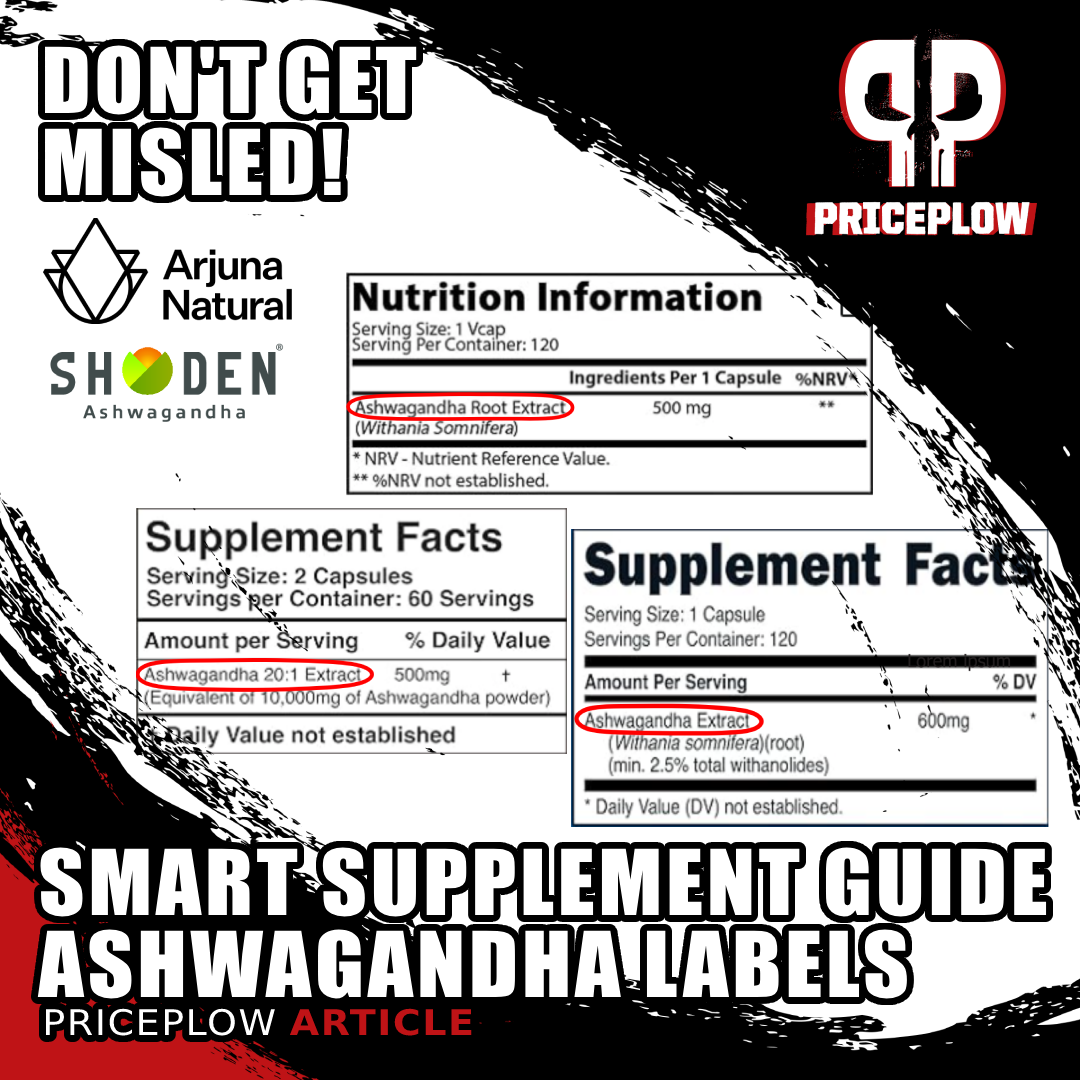
Not all ashwagandha extracts are created equal. This guide explains why standardization matters, why extract ratios can be misleading, and how to identify quality products when shopping for this popular adaptogen.
Walk into any supplement store or browse online retailers, and you'll find countless ashwagandha products commanding shelf space. This ancient Ayurvedic herb has exploded in popularity for stress relief, sleep improvement, and hormone support. But as consumer interest grows, so does a concerning reality: not all ashwagandha extracts are created equally.
When shopping for vitamins and minerals, it's relatively straightforward -- 500mg of vitamin C is 500mg of vitamin C, almost always from ascorbic acid. But with botanicals like ashwagandha, the situation becomes much more complex. The quality, potency, and effectiveness of these extracts can vary dramatically based on how they're standardized, tested, and labeled.
This guide will help you navigate the confusing world of ashwagandha supplement labels, identify misleading claims, and make informed choices about the products you purchase. In addition, you can use this guide to help you learn how to discern other botanical ingredients -- the same rules apply.
The Ashwagandha Label Confusion
When you search for ashwagandha supplements online or browse store shelves, you'll encounter a bewildering array of options with vastly different prices. The cheapest options might cost under $10, while premium extracts can exceed $50. But what's actually causing this price difference, besides marketing puffery?
Unlike vitamins and minerals, where you generally know exactly what you're getting, botanicals contain complex compounds that can be extracted, concentrated, and tested in various ways. With ashwagandha, these active compounds are primarily withanolides – naturally-occurring steroidal lactones responsible for many of the herb's therapeutic effects.
Let's examine the three main types of ashwagandha labeling you'll encounter and what they really mean for the quality of the product you're buying.
Label Type 1: The Basic “Root Extract”
When a label simply states "Ashwagandha Root Extract - 500mg" without any additional information, this is the bare minimum of disclosure... and is often a red flag for quality.
What This Actually Means
This could be as simple as a 1:1 extract, meaning the manufacturer has taken ashwagandha roots and created a basic extract without any standardization of active compounds. This is just plain plant matter that has effectively had zero purity processing done to it.
While you know the amount of extract per capsule, you have no idea what concentration of active ingredients you're actually getting.
The Problems With Basic Extracts
Without standardization, there's no way to ensure:
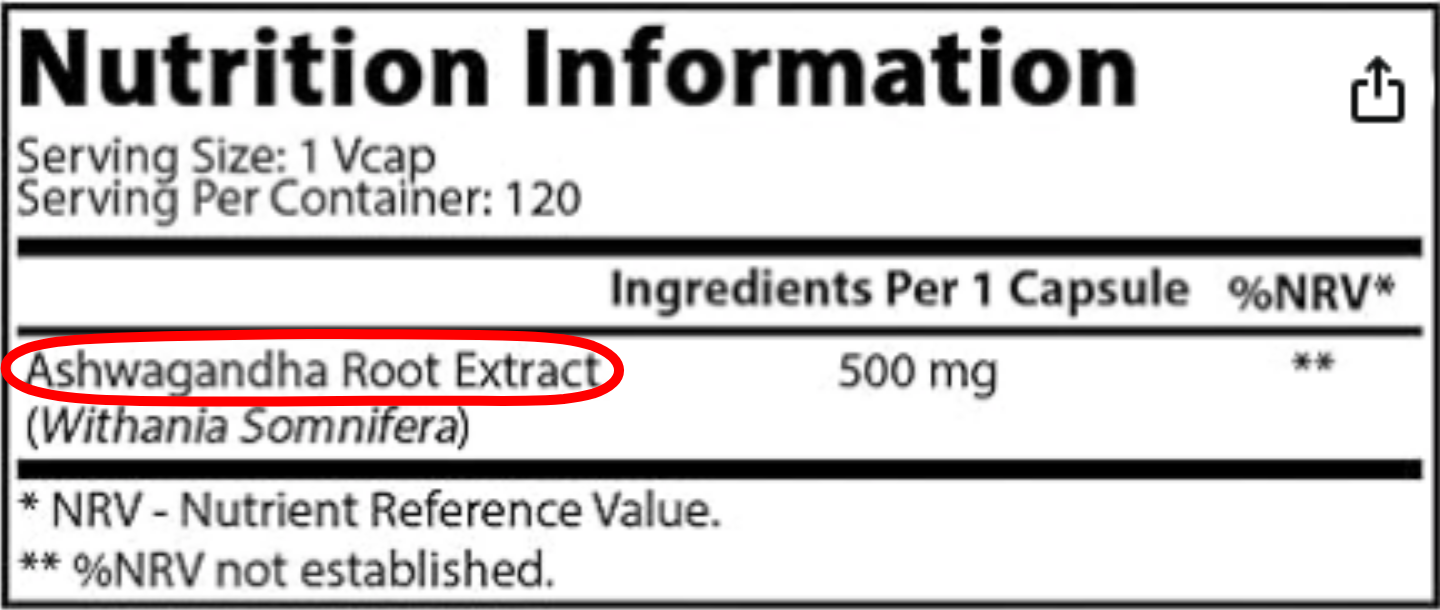
The most minimal supplement label showing just "500mg Ashwagandha Root Extract" with no standardization details. This label provides zero insight into actual potency or active compound content.
- Batch-to-batch consistency: Each production run could contain vastly different levels of active compounds
- Therapeutic effectiveness: Nearly all clinical studies on ashwagandha are conducted using standardized extracts with specific levels of active compounds, and what's in these products will almost never reach the potency of the most well-studied extracts.
- Value for money: You might be paying for plant material with minimal therapeutic benefit. It's oftentimes cheaper, but you're dealing with a disproportionately underpowered extract compared to clinically studied versions.
Questions to Ask
When you see a product labeled this way, ask yourself (or the manufacturer):
- What concentration of withanolides does this contain?
- How do you ensure consistent levels of active compounds between batches?
- What testing methods are used to verify potency?
Chances are, you will not receive quality answers from brands using such labeling standards.
Label Type 2: The Misleading “Herb-to-Extract Ratio”
The second type of labeling you'll encounter makes claims like "Ashwagandha 20:1 Extract - 500mg" and often includes statements such as "equivalent to 10,000mg of raw herb!"
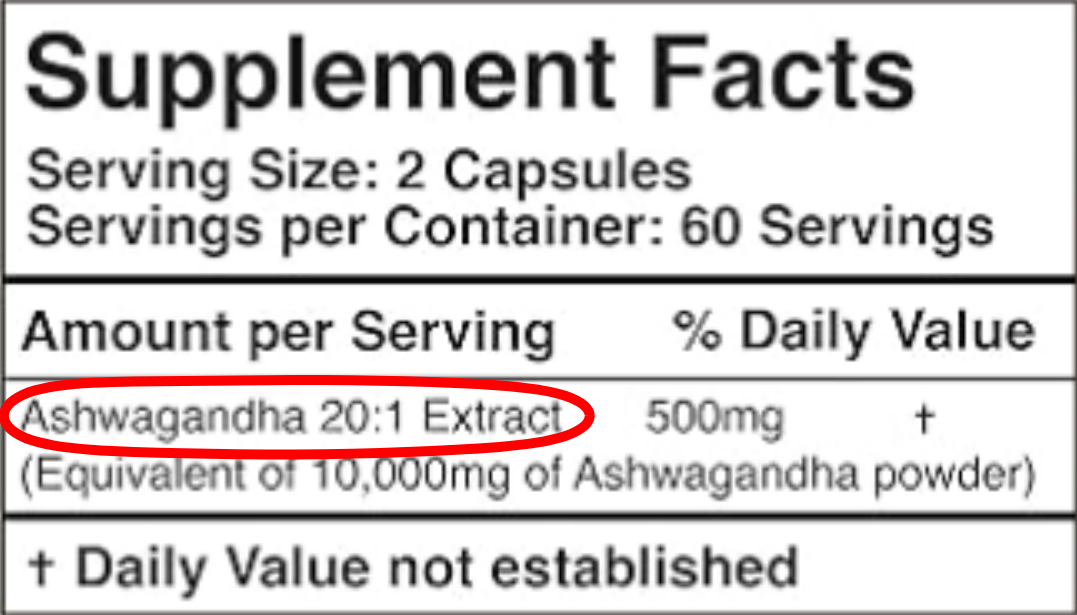
Shows the misleading "20:1 extract ratio" approach claiming "equivalent to 10,000mg of Ashwagandha powder." These unverifiable claims tell consumers nothing about actual withanolide content.
Breaking Down Extract Ratios
In theory, a 20:1 extract ratio means that 20 parts of raw herb material were used to create 1 part of final extract. So 20 grams of raw ashwagandha would produce 1 gram of extract. This is a decent starting point, but if this is all you're told, it's still not enough information.
The Problems With Extract Ratios
This labeling approach has several significant issues:
- Unverifiable claims: There's no scientific test that can confirm whether an extract is truly 20:1, 15:1, 10:1, or even 5:1. Manufacturers can claim any ratio without fear of verification.
- Exploitation potential: Because of the above, some companies produce 5:1 extracts but label them as high as 40:1 simply by changing the certificate of analysis – charging premium prices for standard products.
- Variable active content: Raw ashwagandha crops vary tremendously in their withanolide content depending on:
Also known as Withania somnifera, ashwagandha is the dietary supplement industry's most prominent adaptogenic herbs. Image courtesy Wikimedia Commons.
- Growing region
- Climate conditions
- Harvest timing
- Seasonal differences
- Misleading equivalency: The "equivalent to X mg" claims assume that all raw ashwagandha contains identical levels of active compounds, which is demonstrably false.
The Real Truth About Equivalency
When a label claims a 500mg capsule of 20:1 extract is "equivalent to 10,000mg of ashwagandha powder", it's making a functionally misleading statement. The extract may indeed be derived from 10,000mg of powder, but:
- That specific batch of raw herb could have had unusually low or high withanolide content
- The extraction process might not have efficiently captured the active compounds
- The final product could contain widely varying levels of therapeutic compounds
Labels that claim "equivalency" within the supplement facts panels are not compliant with the FDA's regulations, either. By definition, the only thing that is "equivalent" to the 10,000mg of original powder is the 10,000mg of original powder. Once it's been processed, it's simply no longer equivalent, and those claims are puffery (at best) and deceitful (at worst).
Label Type 3: The Standardized Extract
The third and most informative labeling approach looks something like: "Ashwagandha Root Extract - 600mg, standardized to 2.5% total withanolides".
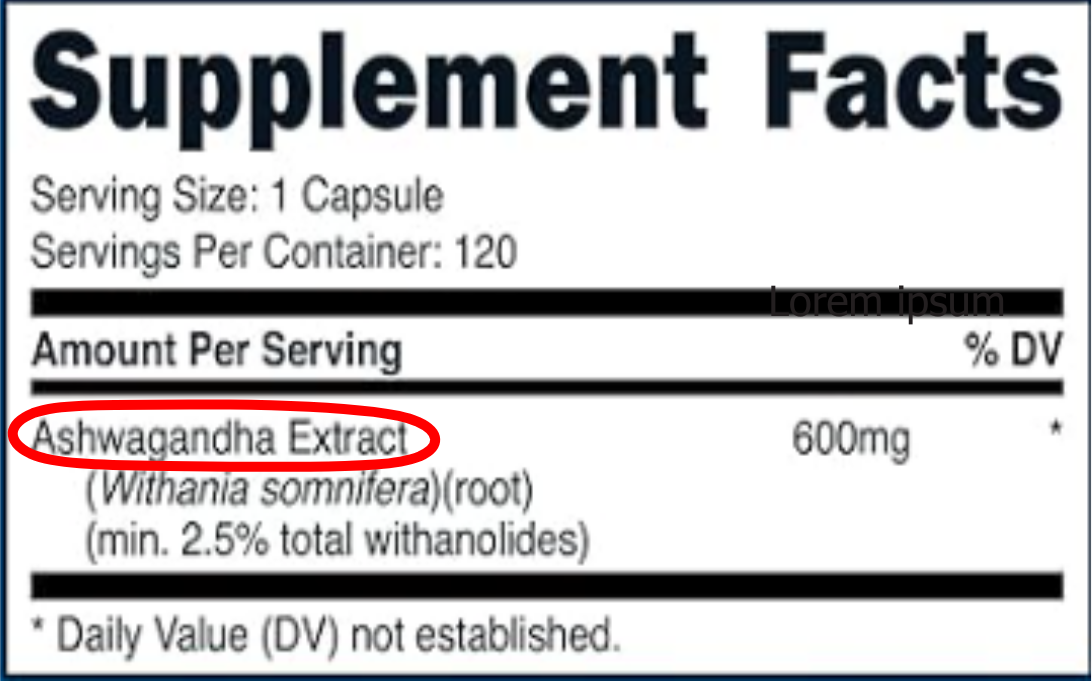
Improved label showing "600mg ashwagandha standardized to 2.5% total withanolides" but still missing critical testing method information and glycoside-to-aglycone ratio that affects bioavailability.
Why Standardization Matters
Standardization ensures that each capsule contains a specific, measured amount of active compounds – in this case, withanolides. A 600mg extract standardized to 2.5% withanolides would contain 15mg of withanolides per capsule.
The Testing Method Problem
However, even standardized extracts have a hidden complexity: the testing methodology used to determine withanolide content.
Two primary testing methods exist:
- Gravimetric testing: An older, crude method that measures total weight after precipitation
- HPLC (High-Performance Liquid Chromatography): A more accurate, modern method that specifically identifies individual compounds
Here's the critical difference: an extract showing 2.5% withanolides via gravimetric testing would typically only show 1-1.5% when tested via HPLC! Yet both could be labeled identically as "2.5% withanolides" since manufacturers aren't required to disclose testing methods.
The Price Implication
This testing difference has significant cost implications:
- Gravimetrically tested material can cost one-third the price of HPLC-verified material
- Consumers have no way to know which testing method was used based on the label alone
As you can see, there are levels to understanding the ashwagandha market. Thankfully, we're learning how the industry is dramatically improving its abilities and communication:
The Glycoside Factor
Beyond standardization percentages lies an even more important factor that almost no labels disclose: the form of withanolides present in the extract. This is what we recently covered in our article titled "Ashwagandha Evolution: Shoden and the Rise of Glycoside-Enhanced Extracts".
Glycosides vs. Aglycones: A Critical Distinction
Withanolides exist in two main forms:
- Withanolide Aglycones: The "free" form of withanolides (including compounds like withaferin A)
- Less stable in the digestive system
- More rapidly metabolized
- Lower bioavailability
- Withanolide Glycosides: Withanolides bound to sugar molecules
- More stable during digestion
- Better absorption patterns
- Superior bioavailability
The Hidden Truth About Most Extracts
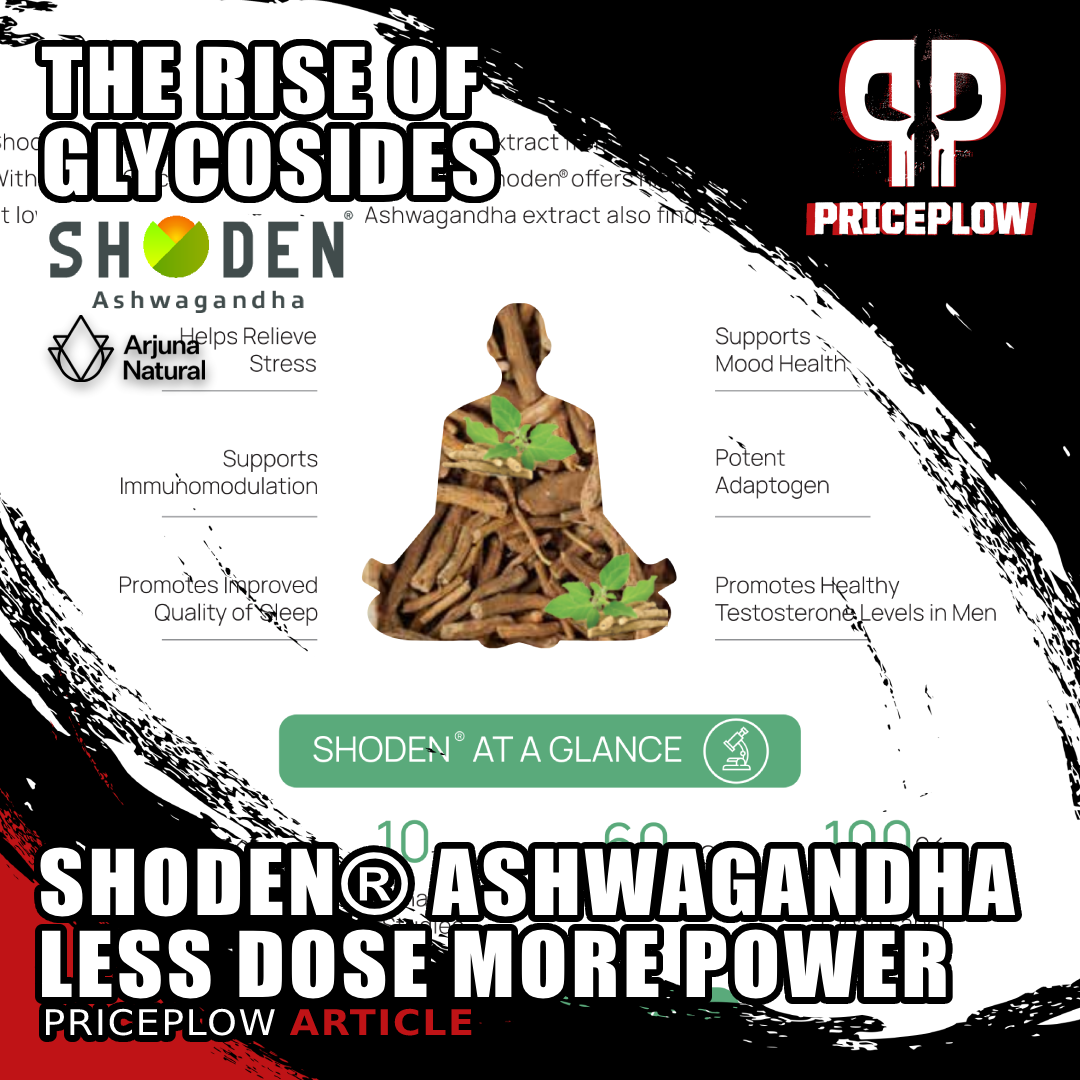
Shoden brings a new era to ashwagandha supplements with 35% glycowithanolide standardization. Research shows it delivers powerful effects at just 60-120mg daily, compared to 600mg+ with traditional extracts.
In a typical ashwagandha extract standardized to 2.5% total withanolides:
- Majority are usually in the less bioavailable aglycone form
- Low levels are in the more bioavailable glycoside form
- Labels rarely disclose this breakdown
This means that two products with identical "2.5% withanolides" claims could have vastly different therapeutic effects based on the glycoside-to-aglycone ratio!
How to Be a Smart Ashwagandha Consumer
Armed with this knowledge, here are key questions to ask when evaluating ashwagandha supplements:
- Is the extract standardized? If not, the active compound content is unknown.
- What testing method is used? HPLC is more reliable than gravimetric testing.
- What is the glycoside content? Higher glycoside content typically means better absorption and efficacy.
- Is the methodology published? Transparent companies are willing to share their testing methods.
- What plant parts are used? Some extracts use roots only, while others combine roots and leaves for a broader spectrum of compounds.
Shoden: A New Standard in Ashwagandha Labeling
One extract that addresses these industry issues is Shoden from Arjuna Natural, the sponsor of this article. What makes it different:
- Industry-leading glycoside content: Standardized to 35% withanolide glycosides using HPLC testing
- Transparent methodology: Their testing method is published and available for review
- Clear specification: Specifically identifies glycoside content rather than just total withanolides
- Clinically validated: Shows significant effects at much lower doses (60-120mg) compared to traditional extracts (300-600mg)
The Bioavailability Advantage
Research demonstrates that glycosidic forms of withanolides offer significant advantages in terms of:
- Higher absorption rates
- Longer time spent in circulation
- Greater overall biological effectiveness
A comparative study found that Shoden's bioavailability was significantly higher than standard extracts, with:[1]
- 18 times higher total withanolide levels (area under curve)
- 6 times higher maximum concentration
- 4.13 times longer mean residence time
This explains why Shoden demonstrates clinical effects at doses as low as 60mg daily, while traditional extracts typically require 300-600mg for comparable results.
Conclusion: Reading Between the Label Lines
When it comes to ashwagandha supplements, the information not shown on the label is often more important than what is displayed. While the industry lacks standardized guidelines for testing and disclosure, educated consumers can make better choices by understanding what to look for.
Remember these key points when evaluating ashwagandha products:
- Extract ratios alone are unreliable indicators of quality
- "Equivalent to X mg" claims are mathematically accurate but functionally misleading
- Testing methodology dramatically affects reported withanolide content
- The glycoside-to-aglycone ratio is critical for bioavailability
- Transparency in testing and standardization is a hallmark of quality manufacturers
By looking beyond marketing claims and understanding what truly matters in ashwagandha extracts, you can select products that deliver the benefits this remarkable adaptogenic herb has to offer.
This Applies to Other Botanicals, Too
Note that these lessons can be applied to numerous other herbs and botanical extracts -- their standardizations and active molecules will differ from the withanolide glycosides we seek with ashwagandha, but the overall idea remains the same.
To learn more about ashwagandha specifically, read our main article on Shoden Ashwagandha and sign up for our Arjuna Natural news alerts below, so that you don't miss out on any upcoming Shoden research or product launches:
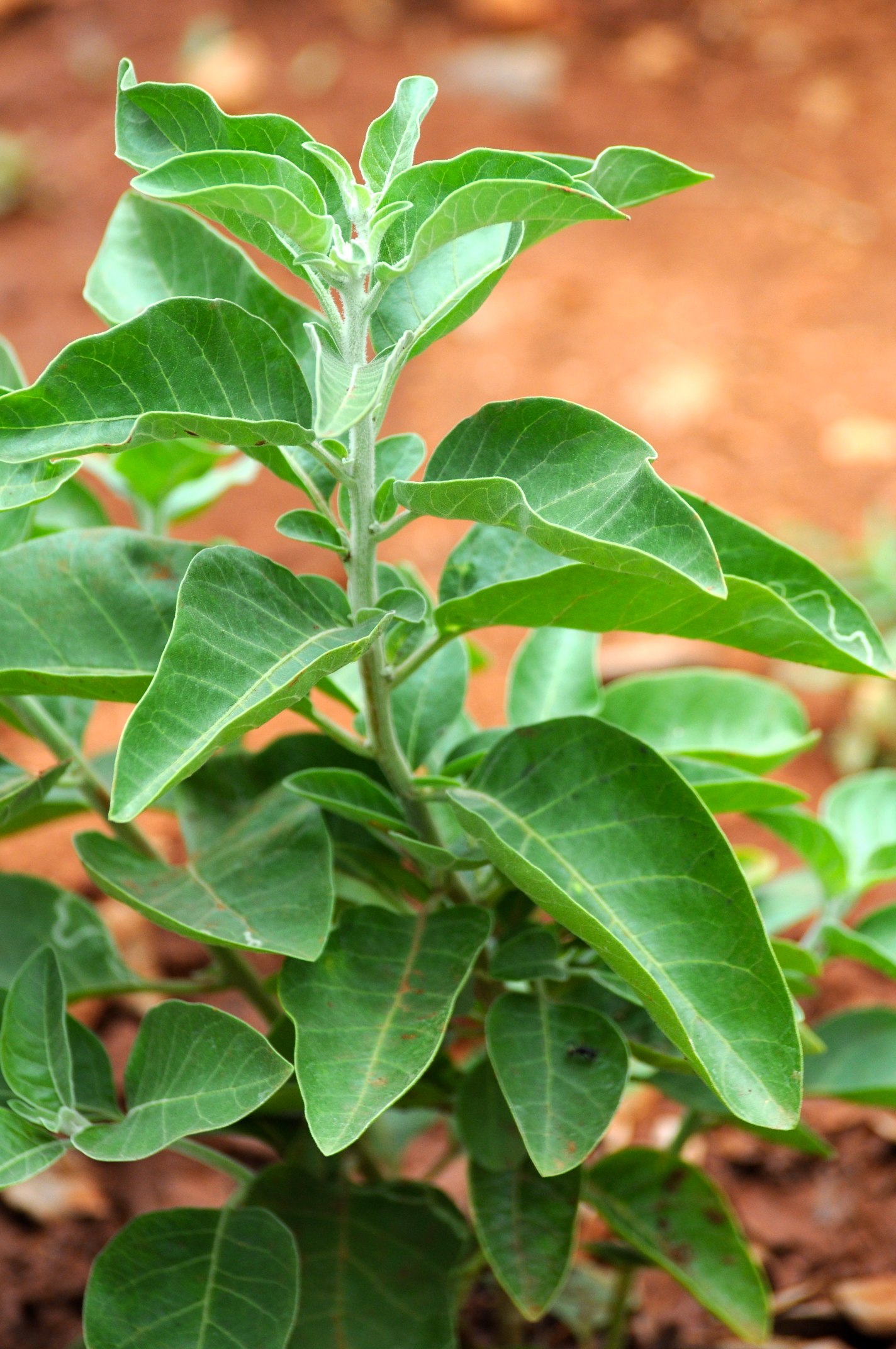

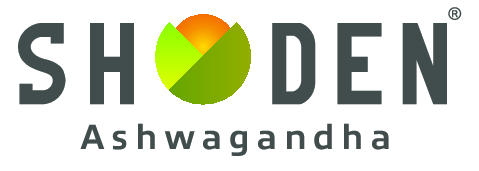
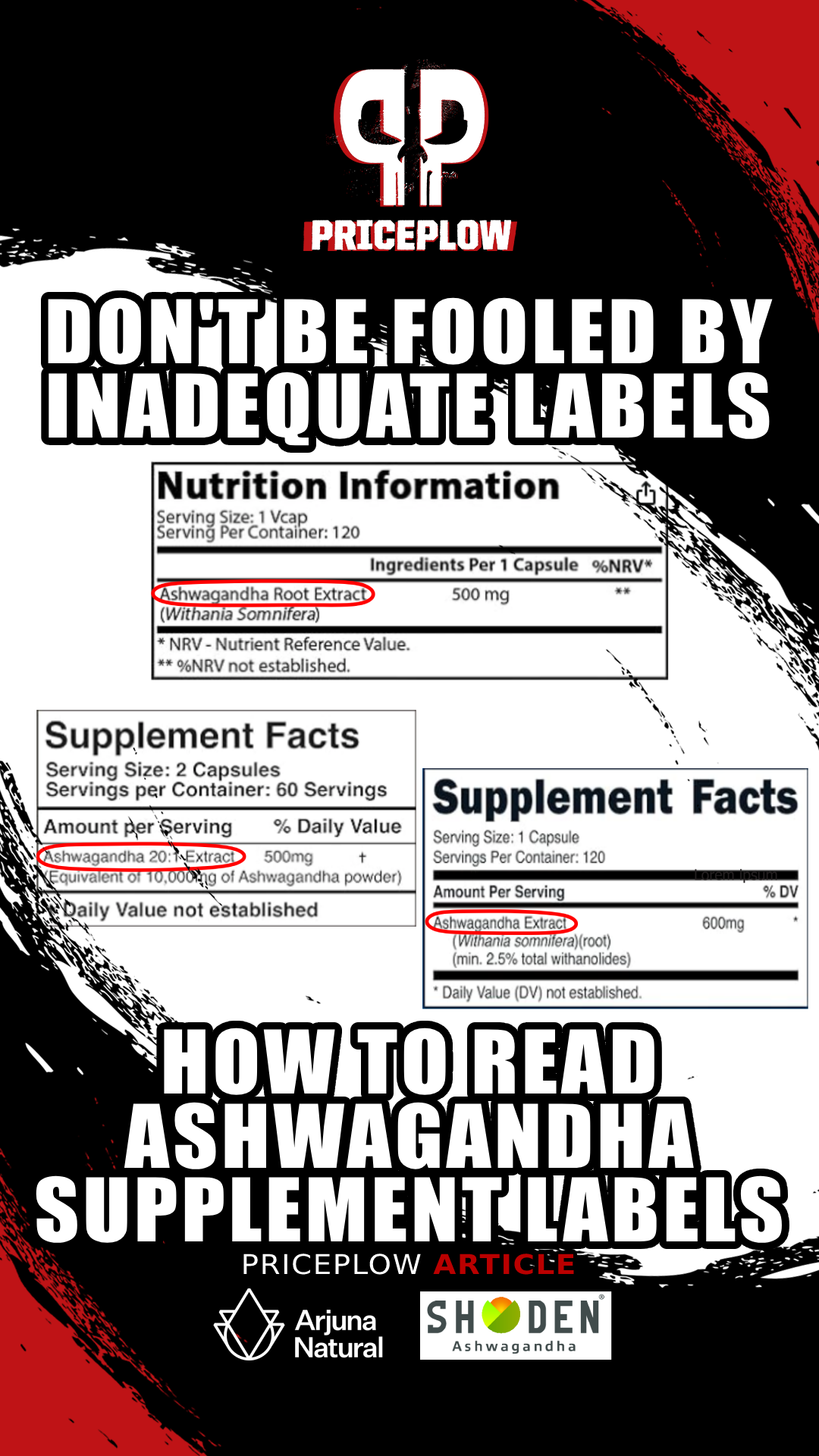

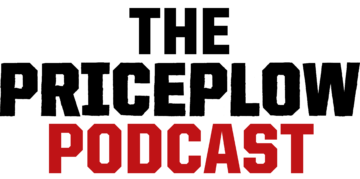
Comments and Discussion (Powered by the PricePlow Forum)